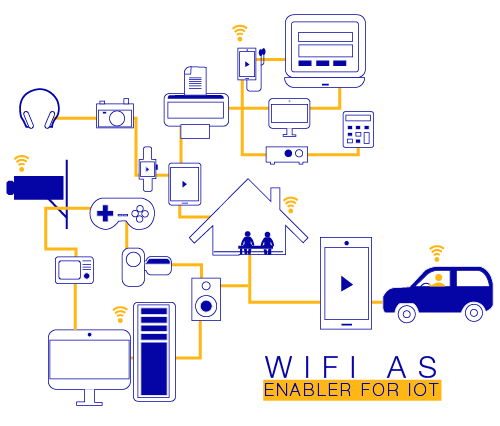The Internet of Things (IoT) has industry experts and consumers excited. Pegged as the next industrial revolution, or ‘the new internet’, IoT will lay the foundation of how businesses, governments and consumers interact with the world in near future. Research by Business Insider Intelligence projects over 34 billion devices connected to the internet by 2020 – a threefold increase from 10 billion in 2015. Of these, IoT is expected to contribute to 24 billion of them! And with these many connected devices, the industry is expected to spend around USD 6 trillion on IoT solutions.
IoT and machine-to-machine (M2M) communications have been the mainstay of discussions in the wireless networking industry, and for good reasons. The opportunities are immense, and includes a diverse range of applications – personal fitness, healthcare, energy management, among others. While industry enthusiasts debate on addressing opportunities on the hardware and software fronts, the underlying technology to enable it is not discussed as much.
In the true spirit of IoT and M2M, any enabler needs to be wireless and be business and consumer friendly. And for these reasons (and additional ones listed below), using Wi-Fi to connect devices is an optimal and plausible solution. Here’s why:
- Low cost per value – While Wi-Fi chips have been historical priced higher than other wireless networking components, the value is derived using Wi-Fi’s inherent security, power management, robust software and general support makes it a better value proposition.
- Power consumption – Wi-Fi’s history of ensuring reduced power consumption footprints will apply well to IoT devices
- Compact designs – Wi-Fi solutions are available in compact sizes that can easily be accommodated with any IoT device. A good example of how Wi-Fi can be solution for smaller devices is the Raspberry Pi and telecom dongles that provide Wi-Fi solutions on the go
- Scaled deployments – IoT and M2M require scales of connectivity. Moving from a residential focus to city wide, or global, connectivity provisions will need to be made at scale. Wi-Fi already benefits from having been part of large scale deployments.
- Licensing: Unlike other network bandwidths, Wi-Fi’s radio frequency is an open source.
- IP based – IoT always requires using IPs for communication. Wi-Fi has inherent support for IPs and is future ready with support for IPv6
- Security – Wi-Fi has sound security measures, supported by WPA2 and a mature community of third party software













